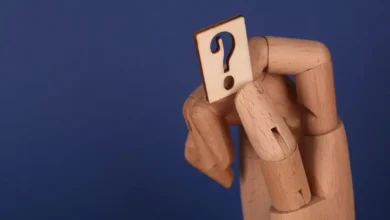Particle Board: How It’s Made, Its Uses, and Why It’s Popular in Furniture
Particleboard has become a favorite when it comes to durable and affordable materials that can be used for home décor and furniture. The material is widely used for a variety of applications, from construction to furniture. Its cost-effectiveness makes it a popular choice. This article will explore the production of particle boards, their common applications, and why they are so popular, particularly in furniture.
What is particle board?
Particle board is also called chipboard. It’s a wood-engineered product that’s made of wood shavings or chips. They are then compressed, and the adhesives are used to bond them together. This is an alternative that is more cost-effective than plywood, solid wood, and other types of engineered wood. It’s widely used for furniture, cabinets, and flooring.
Particle Board Characteristics:
- Affordable particle board is usually cheaper than wood products like MDF or plywood.
- Lightweight Due to the composition, it is generally lighter than solid wood.
- Smooth surface: This type of finish is often smooth and can be painted, laminated or veneered. It’s a popular choice for furniture.
What is the process of making particle board?
To ensure strength, durability, and usability, particle boards are made in several stages. This is a simplified version:
1. Gathering Raw Materials
Particle board is primarily made from wood chips, wood sawdust, and other wood wastes. These are usually sourced by sawmills or industries that process wood. The materials used in particle board are usually by-products from wood milling and cutting.
2. Mixing and shredding
Wood particles are shred into small pieces, and then mixed with adhesives or resins. The binders are used to hold wood pieces together and give the board strength.
3. Pressing
In a hydraulic pressing machine, the mixture of wood and adhesive is compressed at high temperature. The process is known as hot pressing and ensures the particles are tightly bonded.
4. Finishing and Cutting
The particle board can be cut to various shapes and sizes depending on its intended purpose. To give the surface a more polished look, it can be refined further, laminated, or veneered.
Particle board: Common uses
Particle board has a variety of uses due to its cost-effectiveness and versatility. Many common applications include:
1. Furniture Manufacturing
The use of particle board in affordable furniture such as wardrobes, cabinets and tables is widespread. Low cost is a major factor, particularly in furniture for mass production. It is easy to cut and shape the board, which makes it perfect for intricate designs.
2. Shelving and Cabinetry
Particle board is used in kitchens and baths to create cabinets and shelving. Particle board, when finished and laminated properly, can look like more expensive materials such as oak or mahogany.
3. Flooring
Underlayment is another use for particle board. The smooth surface helps to support flooring like carpet, vinyl, or laminate.
4. Panels for Walls
For wall panels and partitions, particle board is used in many homes. The interior décor is easy to install and cost-effective.
5. Packaging
Packaging materials are often made from particle board by some manufacturers. The lightweight but sturdy structure of particle board helps to protect goods during transportation.
What makes particle board popular in furniture?
The use of particle board in furniture is gaining popularity, especially for budget-friendly models. Here are some of the reasons it’s so popular with furniture makers:
1. Cost-Effective
The affordability of particleboard in furniture has been a major factor. This is a cheaper alternative to plywood and solid wood, making it more accessible to both consumers and manufacturers.
2. Versatility and Customization
It is easy to customize and shape particle board in order to suit specific design requirements. This is usually laminated to look like more expensive materials, such as wood veneers and melamine. Its flexibility makes it a great choice to create a variety of styles.
3. Easy to handle and lightweight
Particle board, compared to solid wood, is lighter, which makes it easier to transport and assemble. It is especially useful for flat-pack furnishings, as they are often shipped unassembled.
4. Sustainability
Particle board is a sustainable alternative to solid wood because it uses recycled wood byproducts. It helps to reduce waste and conserve natural resources.
5. Smooth Finish
The smooth, textured surface of particle board can easily be painted, laminated, or veneered to create a beautiful finish. It can even mimic the look and feel of high-end hardwoods. It is ideal for making stylish furniture that’s affordable.
Pros and Cons of Particle Board
Particle board is no different. It has both advantages and disadvantages. You can decide whether particle board is the best choice for your project by understanding its advantages and limitations.
Pros:
- Affordably priced As previously mentioned, this product is cheaper than plywood or solid wood.
- Environmentally friendly: This product is made from recycled wood and other materials. It’s an environmentally friendly option.
- It’s easy to work with: it is lightweight and has a smooth surface that makes it easy to shape and finish.
Cons:
- Durability Particle board is less durable than solid wood. Water and moisture can cause damage.
- Maximum weight: Although it is great for furniture, it may not be able to support heavy loads.
- Particle board is susceptible to wear over time; it can wear out more rapidly than any other material, particularly if the particle board has been exposed to moisture.
Questions and Answers about Particle Board
1. Is particle board stronger than plywood?
No, plywood is generally stronger and more durable than particle board due to its layered construction, making it more resistant to wear and damage.
2. Can particle board be used outdoors?
Particle board is not recommended for outdoor use as it is vulnerable to moisture, which can cause it to swell and deteriorate.
3. Is particle board safe for use in furniture?
Yes, particle board is safe for use in furniture, provided that it has been properly finished and coated. However, you should be cautious with certain adhesives and resins used in the manufacturing process.
4. Can I paint particle board?
Yes, particle board can be painted or laminated to achieve the desired finish. However, the surface must be prepared properly to ensure the paint adheres well.
5. How long does particle board last?
The lifespan of particle board depends on its use and care. It can last several years in dry conditions but may degrade faster if exposed to moisture or heavy wear.
Conclusion
Particle board can be used for a variety of applications, including furniture, flooring, and wall panels. Cost-effectiveness, ease of use, and versatility make it a popular choice for consumers and manufacturers who are on a budget. With the right care and finish, it can make a great choice for many projects.


